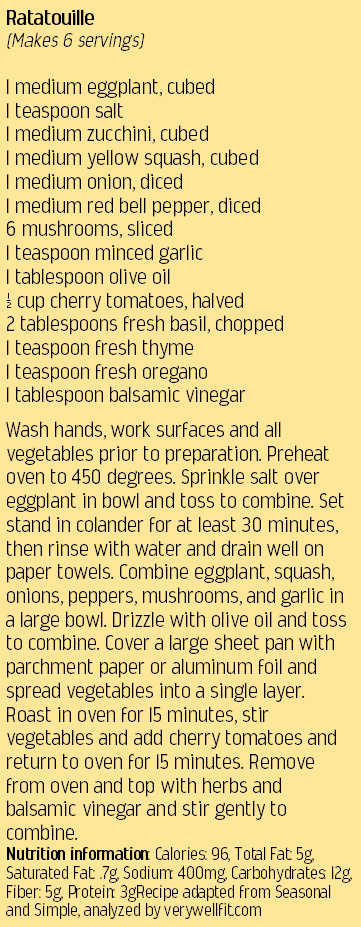|
 by Denise Sullivan, University of Missouri Extension Eggplant is another one of those vegetables that I didn’t discover until well into adulthood. While it may not be a vegetable found in our family garden, it is a favorite of mine to choose at the local farmer’s market. While the bulbous purple variety is the most common, some eggplant varieties can also be long and slender with a purple, pink, white or black hue, as well as small white globe shapes that indeed resembles an egg.
While we refer to eggplant as a vegetable, they are botanically a fruit since they grow from a flowering plant and contain seeds. Eggplants are a member of the Solanaceae family, along with tomatoes, potatoes, and peppers. This family, also known as nightshade, may get a bad reputation due to a natural chemical called solanine, which is considered by some to contribute to inflammation. While there is not a consistent body of evidence that supports this theory, those with inflammatory conditions such as arthritis should monitor their symptoms after eating vegetables in this family. Eggplant has a bit of an uncertain origin, but historical consensus indicates that eggplant originated in India and China, who are still the top producing countries. As trade routes opened, it was transported to Europe, Africa and eventually to the United States by Spaniards in the 1800’s. According to the USDA Agriculture Marketing Research Center, the top producing states of eggplant are Georgia, Florida, California, New Jersey, and New York. When selecting eggplant, choose a product that is free from blemish with a smooth glossy skin that is firm and heavy for its size. Eggplant is temperature sensitive and can be stored in the refrigerator for up to five to seven days. Once cut, the flesh will turn brown very quickly. Eggplant can also be frozen for later use, most commonly in slices, for grilling or frying. While some may have concerns about the potential inflammatory nature of eggplant, it is a good source of vitamins A and C, as well as folate, potassium, manganese, and dietary fiber, all at a very low calorie per serving. The deep purple color also makes it rich in anthocyanins, a phytonutrient showing promise in prevention of heart disease. Because eggplant can be bitter, especially if over-mature, a key first step in preparation is salting to draw out the bitterness. After cubing or slicing, sprinkle pieces with salt and set on paper towels for at least 30 minutes. After the standing time, rinse with water and pat dry with paper towels before moving to the next step of preparation. I have learned to enjoy many preparations of eggplant, such as eggplant parmesan, rollatini and grilled slices with olive oil and herbs. One of my favorites, however, allows me to enjoy eggplant with squash, peppers and tomatoes that are bursting from my garden. If you’ve never tried eggplant, ratatouille is a great way to combine it with vegetables that you might be more familiar with. Enjoy! Denise Sullivan is a Nutrition and Health Education Specialist for MU Extension in the Urban West Region, serving Jackson and Platte Counties. For research-based nutrition and food safety information and programs, visit https://extension.missouri.edu/counties/urban-west-region Comments are closed.
|
Categories
All
Archives
July 2024
|
Grain Valley NewsGrain Valley News is a free community news source published weekly online. |
Contact Us |



 RSS Feed
RSS Feed
